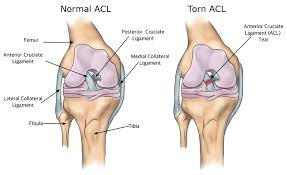Comprehensive Guide to ACL Injury: Causes, Treatment and Recovery

Introduction
Anterior cruciate ligament (ACL) injuries have become increasingly common in sports, particularly among athletes involved in high-impact and pivoting activities. Understanding the significance of ACL injuries, their causes, and effective recovery strategies is vital for athletes and fitness enthusiasts alike. With the rising participation in sports, especially among youths, awareness regarding ACL injuries is crucial for prevention and management.
What is an ACL Injury?
The ACL is one of the key ligaments that help stabilise the knee joint, connecting the thigh bone to the shin bone. An ACL injury typically occurs during sporting activities that involve sudden stops, jumps, or changes in direction. Symptoms include a popping sound at the time of injury, swelling, and decreasing range of motion, which can severely impact an athlete’s performance.
Causal Factors
Several factors can contribute to ACL injuries, including:
- Compromised Technique: Poor landing mechanics and inadequate training can increase risk.
- Physical Conditioning: Weak muscles and lack of flexibility are significant contributors.
- Gender Differences: Studies indicate that women are more susceptible to ACL injuries due to anatomical and hormonal differences.
Recent Incidence and Trends
According to the National Athletic Trainers’ Association (NATA), approximately 200,000 ACL injuries are reported annually in the United States alone. Recent trends show an increase in these injuries among youth athletes, likely due to growing interest in competitive sports among younger populations.
Treatment Options
Upon sustaining an ACL injury, immediate treatment often includes rest, ice, compression, and elevation (RICE). For severe injuries, surgical intervention may be necessary. The typical procedure involves reconstructing the torn ligament using grafts from the patient’s own tissues or a donor. Post-surgery, a structured rehabilitation programme is crucial for recovery.
Rehabilitation and Recovery
The recovery period for ACL injuries varies depending on the severity. Generally, athletes need at least six to nine months to return to sports post-surgery. A comprehensive rehabilitation programme is key to restoring strength and stability to the knee, focusing on flexibility, strength training, and gradual progression to return to sports activities.
Conclusion
ACL injuries are a significant concern for athletes at all levels, with serious implications for one’s physical activity and overall health. Preventative strategies, combined with appropriate training and awareness, can mitigate the risks of ACL injuries. For those affected, understanding treatment pathways and committing to a diligent rehabilitation process are essential for a successful return to sport. As research evolves, improving treatment options and refining prevention strategies will be vital in combating the rising incidence of ACL injuries.









